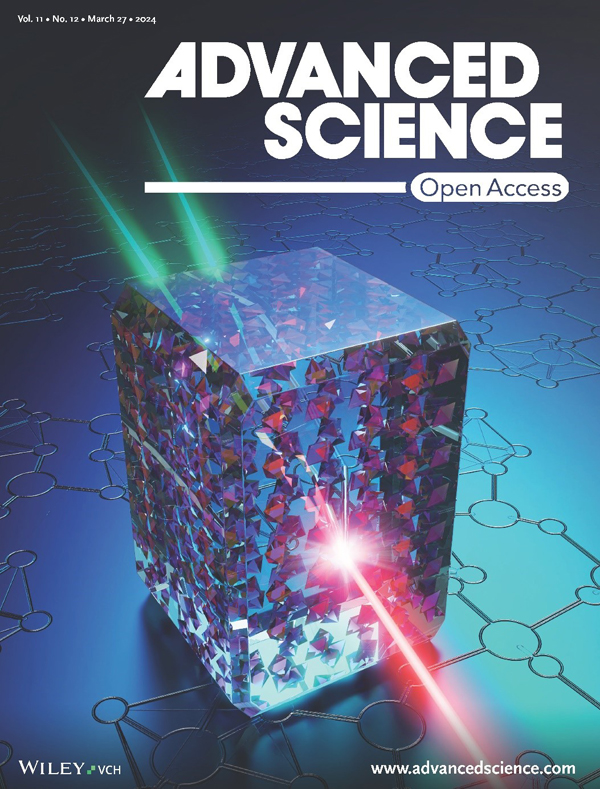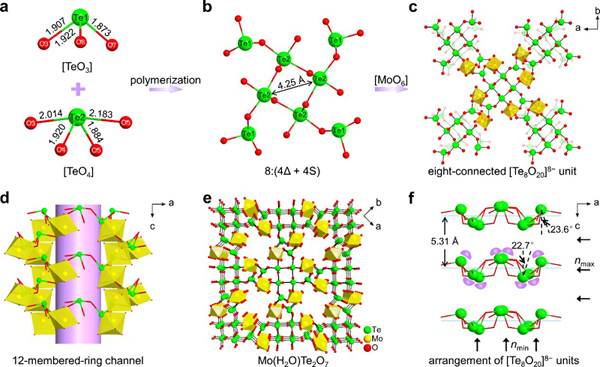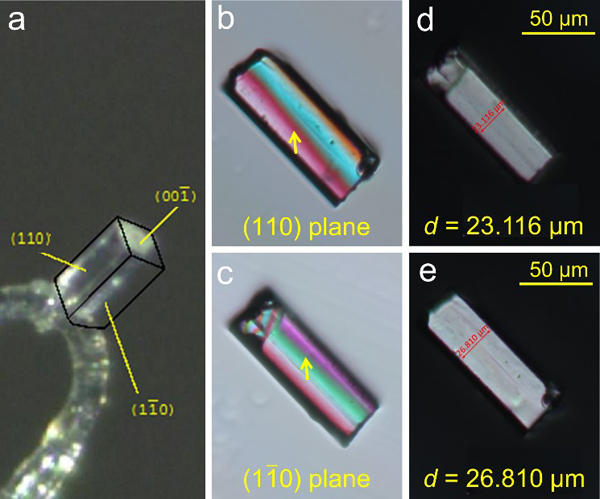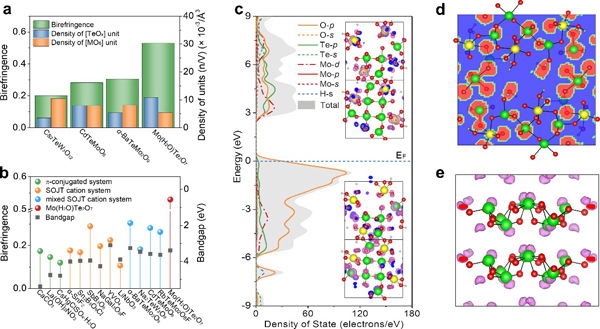The team from the Sino-Australian Joint Research Center of OUC’s College of Materials Science and Engineering made significant progress in the research of covalent molybdenum tellurite oxide optical crystal materials, achieving a new breakthrough in the optical anisotropy of UV broad-band doubled-frequency optical crystalline materials. The center, in close collaboration with the Technical Institute of Physics and Chemistry, CAS and the Australian National University, applied a novel oxygen-anion polymerization strategy to create a Mo(H2O)Te2O7 (MTO) material with strong optical anisotropy and large frequency-doubling effect. The research outcome titled “Giant Optical Anisotropy in a Covalent Molybdenum Tellurite via Oxyanion Polymerization” was published in Advanced Science, and was picked as a cover article because of its innovativeness.

This research proposed an oxygen anion polymerization strategy to achieve large birefringence in oxides by polymerizing three oxygen anions with strong polarizability anisotropy. The research team used X-ray diffraction analysis of single-crystal structures in conjunction with first-principle simulations to explore and clarify that the large birefringence and strong frequency doubling effect achieved by MTO can be attributed to the synergistic effect of polymerized tellurium-based oxygen anions and molybdenum-based oxygen anions. The experiment shows that MTO has a UV absorption cut-off at 366 nm and a large birefringence (0.528@546 nm), which is the largest value among the inorganic UV-transmitting oxide crystalline materials reported so far, and a strong frequency doubling effect (5.4× KDP). This study is of great scientific significance for the creation and development of new large birefringent crystal materials in the UV band.


